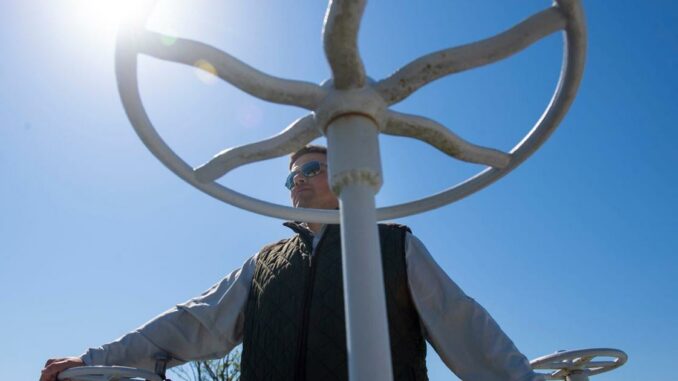
When Ben Malbrough began working to improve Bayou Lafourche 10 years ago, the once-scenic waterway was little more than an emaciated trickle. Dammed off from the Mississippi River long ago, the 106-mile-long bayou had become clogged with weeds and invaded by saltwater.
Hired as executive director of the Bayou Lafourche Fresh Water District in 2013, Malbrough has helped lead a stunning turnaround for the bayou. Several projects totaling more than $220 million are improving drinking water quality, boosting the health of coastal marshes and making the bayou an attraction for boaters and anglers.
Malbrough recently left the water district to work in as an executive for Galliano-based GIS Engineering. The Times-Picayune | The Advocate asked him to reflect on the work that went into one of Louisiana’s largest and most successful restoration projects. The conversation has been edited for length and clarity.
Behind the Jean Lafitte National Historical Park’s Wetlands Acadian Cultural Center in Thibodaux school groups head out onto Bayou Lafourche on Tuesday, May 25, 2021. The park service teamed up with Friends of Bayou Lafourche to help get people back into using the water way for recreation. (Photo by Chris Granger | The Times-Picayune | The New Orleans Advocate)
What led you to the water district?
I grew up in lower Terrebonne Parish in what I like to say was the sprawling metropolis of Bourg, Louisiana. The coast is obviously near and dear to my heart. My family had a camp on Grand Isle and a camp off Timbalier Island. I grew up in the estuary, in the Gulf.
As a kid, I’d hear about land loss and flood protection, marsh creation and all of these buzzwords that have become part of our dictionary now. I realized we’re in a fight for our lives.
I went off to LSU and pursued a degree in civil engineering with the understanding that my passion was on the coastal side rather than your traditional civil engineering fields like roads and bridges. When I finished in 2004, I went to work for the Shaw Group out of Baton Rouge. In 2013, I heard the water district wanted people to implement the Bayou Lafourche project, which had started to gain some momentum. It was an opportunity that I knew I couldn’t pass up.

Ben Malbrough on Bayou Lafourche in 2019.
What were some of the challenges you faced when you started?
The big issues were water quality, saltwater intrusion, and very aggressive invasive (weeds) that had essentially choked off probably 15 miles of the bayou. The fresh water district wasn’t able to flush that slug of putrid water. Any additional flow would have caused drainage issues because the bayou was so choked down with vegetation.
We started implementing these projects, and they began to push back on some of the environmental issues we had with water quality and weeds.
The holy grail of the program is the pump station. Everything we were doing is contingent upon increasing the flow of water from the Mississippi. It will, first and foremost, protect the drinking water supply for almost 10% of the state’s population. It will also utilize Bayou Lafourche as a conveyance channel for fresh water to combat saltwater intrusion, which is one of the leading contributors to land loss in an area that has some of the largest land loss rates on the globe.

Removing rocks used in the demolition of a small dam, known as a weir, from Bayou Lafourche in Thibodaux on April 21, 2021. (Photo by Chris Granger | The Times-Picayune | The New Orleans Advocate)
Now that much of the work is done, the bayou is having a bit of a rebirth.
That’s been one of the most incredible things to see over the past 10 years – just the whole perception of value in the bayou as it became usable again. People can now recreate in the bayou. Now you see people putting in docks, people boating.
It was such an awesome project to be a part of. There were so many different moving components that touched so many different people’s lives. And that’s what made it so complicated to close the door on that chapter. But it’s in a very good place. They have a very good, capable director. They still have a very competent, aggressive and forward-thinking board. I have all the confidence in the world that they’re going to complete it. The pump station is underway. Once it’s complete, we’ve got about 20 miles of channel dredging left to do, and the Mississippi will then be introduced back into bayou.

Leave a Reply